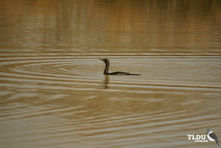
Shoppers Feedback:
Jan 17, 2017
Hello Ros,
I have now paid the invoice, but I would like to write to you just to say a big THANK YOU for getting me the Penguin!
The ChatterMate Penguin became a nice memory for me when I was in New Zealand, and I am so greatful to you for arranging so that I could have it! :-)
Thank you so much!!!!!!!!!!!
Regards,
Malin
Hi Ros,
Many thanks for your very kind email. I really appreciate your prompt reply!
I appreciate your advice regarding the decorations and customs. These are a gift for my daughter’s exchange student family so when she returns home on the weekend I will show her and see if she loves them as much as I do!
Thanks so very much again - I am truly grateful for your kind assistance.
Kind Regards
Bernadette
Ros,
Thanks again for the great customer service. It's a refreshing change!
Best regards,
Trevor
Hey Roz,
Thank you for your emails. Just loved my first order. The cute little Aussie bush critters are going to be used for an office Christmas decoration. My colleagues also liked them and talked about making an order to your site. I'll send you a photo when completed.
I'll be ordering more to send to my daughter's host family in America.
Fabulous service from you.
Kind regards,
Michelle
Thankyou. Order arrived today. One very happy grandson with his new beastly binoculars.
Regards,
Irene
- Home
- Wild Wonders
- Shop
- Aromas of Australia
- Australian Made
- Books
- Book Marks
- Christmas Decoration Sale
- Christmas Decorations
- Clocks
- Drink Holders
- Garden & Outdoor
- Gift Wrapping & Cards
- Home & Giftware
- Jewellery
- Keyrings
- New Products
- Pencils & Pen Holders
- Photo Frames
- Plush Toys
- Plush with Sound
- Sheepskin Rugs
- Stationery
- Stone Carvings
- Toys & Games
- Travel Goods
- Wedding
- Wild Figurines
- Wildlife Safety Products
- Wind Chimes
- Wine Charms
- View All Products
- Wildlife
- Australiana
- Explore
- Contact Us

Quick Facts
| Length: | 65 cm |
| Height: | - |
| Weight: | - |
| Colour: | Totally black with a greenish sheen to the back and a slender grey hooked bill |
| Habitat: | Mainly freshwater habitats but sometimes can be found on sheltered coastal waters |
| Food: | Fish, crustaceans and aquatic insects |
| Predators: | - |
| Status: | - |
The Little Black Cormorant is a small, slim, totally black cormorant with a greenish sheen to the back and a slender grey hooked bill. In the breeding season, adults have fine white flecks on the head and neck and the green tinge becomes more bronze. This species congregates in larger flocks than other cormorants and flies in V-shaped formations.
The Little Black Cormorant is one of only two totally black cormorants in Australia, with the other being the much larger (70 cm - 90 cm)Great Cormorant which has a yellow bill, face and throat and a white chin. The Great Cormorant also flies more often in long lines than in V-shaped formations.
The Little Black Cormorant is found throughout Australia, including Tasmania. It is also found from Borneo and Java, Indonesia, to Papua New Guinea, Vanuatu, New Caledonia, Solomon Islands, Palua and New Zealand.
The Little Black Cormorant is mainly found in freshwater wetlands, but will sometimes be found on sheltered coastal waters, and can use relatively small, deep water bodies. It is strongly aquatic, seldom being seen on dry land, but is often seen resting on rocks, jetties and other perches in water.
Nomadic, leaving coastal habitats when inland waters are plentiful.
The Little Black Cormorant feeds on fish, crustaceans and aquatic insects. It catches prey underwater, by diving and swimming using its large, fully webbed feet for propulsion. It has special nictitating membranes that cover and protect the eyes underwater. As their feathers are not waterproof, cormorants are regularly seen perched with their wings outstretched to dry after fishing.
The Little Black Cormorant nests colonially, often on the fringes of heron or ibis colonies, building large stick nests in the fork of a tree or on the ground. Both sexes share nest-building, incubation and feeding of the young.
The Little Black Cormorant's favoured habitats of deep open waters and estuaries have been less affected by drainage, but some breeding areas are threatened by increased salinity, grazing, land-clearing and more frequent burning.
Last Updated: Thursday 9th January, 2014
BirdLife Australia - www.birdlife.org.au
BUSH e-TELEGRAPH
Signup for our monthly newsletter the "e-Telegraph"
Quick Links
Home | The Beginning | About The Land Down Under | Wild Wonders | Advertise on Wild Wonders | Christmas Decoration Sale | Christmas Tree Decorations | Drink Holders | Plush with Sound | Stone Carvings | Wildlife Wine Charms | Freebies | Australian Wildlife | Help Our Wildlife | Australiana | Photo of the Month | Explore The Land Down Under | Contact Us | Legal Notices

